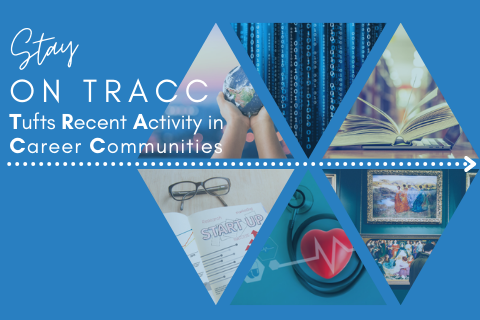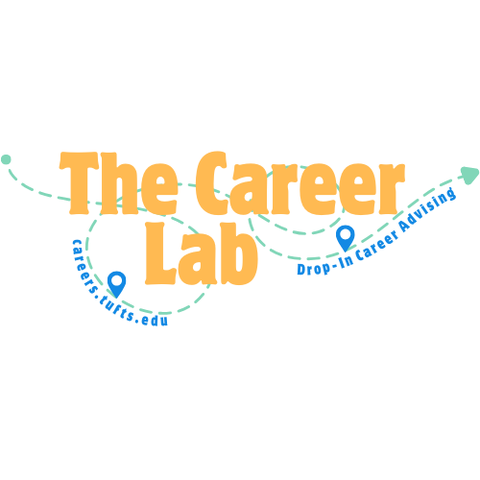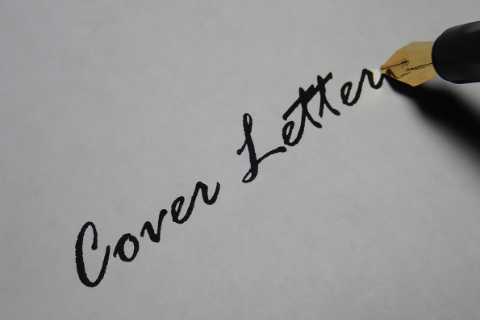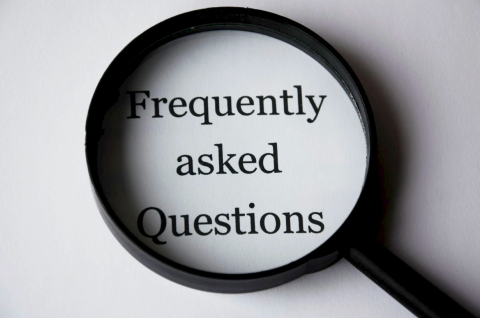A cover letter answers the question that your resume can’t: Why?
A cover letter introduces you to a prospective employer and explains why you are sending your resume. Your resume offers a big picture of your education, experience, activities, and skills. Your cover letter includes only certain aspects, the ones that matter to a specific employer. It also serves as a good example of your writing ability and should demonstrate how your education and experience qualify you for the opportunity.
Avoid repeating your resume verbatim, and instead selectively match your skills and knowledge to an employer’s needs. The most effective cover letter answers the question: How do I meet the employer’s requirements for this position?
You may have one or two versions of your resume; however, you should customize your cover letter for each position. We do not recommend a generic template letter as these are not effective. In addition to reviewing the material here, we recommend you meet with a Career Advisor to review your cover letter.
- Cover Letters Make a Difference
A strong cover letter showcases your communication skills. In an annual survey conducted by the National Association of Colleges and Employers, the ability to communicate is consistently ranked among the top 10 skills sought by employers. Interestingly, they also said in the same survey that most candidates lack these very skills.
- What to Include in Your Cover Letter
Opening Paragraph – To begin your cover letter think about:
- Why you are interested in this field
- Why you are interested in this organization and position
- What the objective of your letter is: apply for a full-time position or an internship
- How you discovered the opening and/or the organization, such as a personal referral or Handshake
Body of your letter – For this paragraph (or two) think about:
- Which skills do you possess that might be helpful for the position? Look at the job description to find out what the employer is looking for.
- Which experiences illustrate how and where you acquired these skills? For instance, you may have acquired a strong ability to prioritize tasks as a double major student athlete.
- Which personal traits are relevant to the position and how can you apply them to the needs of the organization? For instance, perhaps you are committed to equal access to education.
Closing Paragraph – Make sure you are clear about:
- When and how you will follow up.
- How and where you can be contacted.
- Use this worksheet to plan your cover letter.
Business Letter Format
A professional cover letter needs to follow a standard business format. We recommend block style formatting. Justify every line along the left margin. The header you use on your resume is fine for the header on your cover letter. View sample letters here. - Emailing Your Letter
Since most recruitment is done online, you will most likely upload your letter or send it as an attachment, preferably PDF. Your letter should be one page in length and maintain the same formality and quality as if you were turning in an important term paper. Alternatively, you can type your cover letter directly into the body of the email and include your resume (and, if requested, references or writing samples) as attachments.
All attachments should be labeled with your name for easy identification; also include your name and the position for which you are applying in the subject line of the email.
- How to Get Noticed
- Customize your background for a specific job. Your letter guides the reader by summarizing the skills and experiences relevant to a particular opportunity.
- Demonstrate your research, writing, and analytical skills. Your letter allows you to communicate your knowledge of the employer, industry, and career field.
- Convey your motivation and professionalism. Your letter reflects your personality, enthusiasm, and interest.
- Express appreciation for the employer’s time and consideration in reviewing your candidacy.
- View sample letters from Tufts students to see how others customized their letters for particular positions and employers.
- How to Customize Your Letter
Effective cover letters are marketing tools for your job or internship search. Since marketing is about understanding and meeting the needs of a specific audience, your letter should focus on the needs of a specific employer. These needs or requirements are typically described in the job posting, which can help you tailor your background to fit each opportunity.
We offer guidance on matching elements of the job description to your own skills and experiences with this worksheet. The quality of your writing will impress an employer and distinguish you from other candidates.
- Cover Letter Tips
- Address a specific person. A quick telephone call to an employer can help determine the name and correct spelling of your recipient. If you can’t get this information, address the letter to “Dear Hiring Manager” or “Dear Human Resource Manager.” Another suggestion is to use a subject line in place of the salutation (e.g., Application for Research Analyst Position). Do not address the letter to “Dear Sir,” “Dear Madam,” or “To Whom It May Concern.” When addressing a woman, use “Ms.” Instead of “Mrs.” There is no need to use a first name in the salutation: Dear Ms. Smith, not Dear Mary Smith.
- Keep it brief. A cover letter is intended to complement your resume, not repeat its content. Limit the letter to one page. Communicate your enthusiasm, but keep sentences short and clear. Use active, not passive, verbs. For example, use “investigated”, “gathered”, “evaluated” instead of “was responsible for investigating, gathering, or evaluating” (See here for an extensive list of action verbs.)
- Demonstrate your interest. Show what you’ve learned about the employer and/or industry. This is where your research and networking will pay off. Include why you would be an asset to the company, the unique things you have to offer and how they would benefit from having you on their team. You should also highlight relevant experience and expertise and important information that would be of interest to hiring managers, like your fluency in Mandarin or knowledge of SPSS.
- Use language from the job description when possible. When a company posts a job description, they’re telling you what they need. Use that same language to be relevant when you’re explaining why you’re an ideal candidate for the position. Using the same language and keywords from the job description doesn’t just help humans read your resume, it also helps if your application is initially processed by an applicant tracking system (ATS) or a resume parser.
- Write in your own style. You can adopt a conversational tone as long as your writing is flawless and grammatically correct. Avoid bland, overused statements such as “Enclosed please find my resume for your review” and “Please do not hesitate to call me.”
- Put yourself in the reader’s position. Focus on the reader by using the words “you” and “your.” Avoid excessive use of “I” and “me.” Count the number of sentences that begin this way and edit accordingly. Communicate what you can contribute to the reader’s organization, rather than what you expect to get. For instance, “I can communicate easily with your clients because I’m proficient in Spanish,” is better than, “I hope to improve my Spanish skills by communicating with your clients.”
- Pay attention to detail. Employers value effective and careful communicators, and your writing skills are reflected in your cover letter. Grammar, spelling, or typographical errors will send you quickly to the discard pile. Ask a Career Advisor to proofread your letter for content, clarity, and correctness.
- First impressions count. The average employer receives thousands of letters annually from job applicants. Make yours visually appealing.
- Use the same font as your resume (e.g., Times New Roman, 12 point)
- Print a hard copy on the same paper stock as your resume. White or cream color is preferable.
- Sign a hard copy letter with blue or black ink. Write your full name at the bottom of the letter if sending electronically.
- How to Follow Up
Unless an employer indicates otherwise, you may follow up with a phone call or email within 5-10 days of applying. Express your continued interest and inquire about the status of the hiring process or the recruiter’s timeline for filling the position. Rather than simply asking if your resume has been received, this approach is more apt to create a dialogue.
- What Are the Other Types of Letters Used in a Job Search?
Most job search correspondence can be categorized as follows.
- Thank you Notes
Always send a thank-you letter after you interview for a position or meet with someone for career-related advice. Doing so will demonstrate your appreciation for the other person’s time. - Acceptance Letter or Declination Letter
Confirm that you accept or decline an offer - Networking Email
Request career information or an informational interview (further details on networking emails and on email etiquette).
- Thank you Notes












